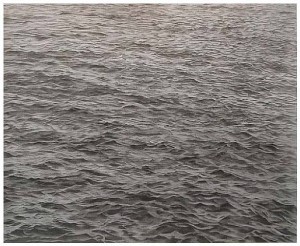 New Left Review‘s new issue has an article by Peter Nolan that surveys the national “territorial” claims over the world’s oceans: “Imperial Archipelagos.” The sea as an awkward political space is one of those hobby interests of mine that may some day turn into something more. This blog has looked at pirates, off-shore havens (data and finance), sea shores, and in general the legal-political geographies of the sea, so I read Nolan’s piece with interest. His article uses the current dispute between China and Japan over the uninhabited Diaoyu (in Chinese) or Senkaku (in Japanese) island group on the edge of the South China Sea to give a historical survey and global sweep of how resource-hungry world powers have carved up the sea. Below are some excerpts from Nolan’s article, but first one more thing.
New Left Review‘s new issue has an article by Peter Nolan that surveys the national “territorial” claims over the world’s oceans: “Imperial Archipelagos.” The sea as an awkward political space is one of those hobby interests of mine that may some day turn into something more. This blog has looked at pirates, off-shore havens (data and finance), sea shores, and in general the legal-political geographies of the sea, so I read Nolan’s piece with interest. His article uses the current dispute between China and Japan over the uninhabited Diaoyu (in Chinese) or Senkaku (in Japanese) island group on the edge of the South China Sea to give a historical survey and global sweep of how resource-hungry world powers have carved up the sea. Below are some excerpts from Nolan’s article, but first one more thing.
At the root of this global sea-grab is the 1982 UN Convention on the Law of the Sea (UNCLOS), a treaty that took a nation’s territorial sea, which extends for 12 nautical miles, and added a 200-mile resource zone—a new territorial extension called an “Exclusive Economic Zone” (EEZ). Nolan does not get into this, but the EEZ is one of those awkward geographies that characterizes the sea as a political space: the EEZ at the same time couples and de-couples political and economic sovereignty. Now, the excerpts from Nolan’s NLR article:
The [Diaoyu/Senkaku island] territory in question is of historical and strategic significance, and it may well possess substantial natural resources, to which [China] would gain access if its claims were successful. However, the resources of the South China Sea need to be seen in comparative perspective with those obtained by the US and the former European colonial powers through the enactment of the UN Convention on the Law of the Sea (UNCLOS).
UNCLOS effected a revolutionary change in the law of the sea by allowing countries to establish a new resource zone called the ‘exclusive economic zone’ (EEZ) adjacent to their territorial sea, and which extends 200 nautical miles from the baselines from which the territorial sea is measured.
Yet while the complex contention between China and its neighbours over maritime resources has dominated Western discussions, the colossal resource grab by former colonial powers that UNCLOS facilitated has almost entirely escaped international attention.
A critically important part of UNCLOS is the provision that islands are entitled to the same maritime zones as land territory, with each allowed an EEZ of 200 nautical miles (370 kilometres).
Some of these islands are exotic tourist destinations, others are wildlife reserves, others still house scientific research stations; many are regarded as eccentric anachronisms. However, these ‘scattered remnants’ of the old colonial empires turned out to be far more significant than most people realize. These far-distant territories are often of immense strategic significance, with many of them containing American naval and air-force bases, as well as reconnaissance facilities. Under UNCLOS, they have also become important in the allocation of legally enforceable property rights over the world’s natural resources.
[He writes about the South Atlantic (Falklands et al), which is, by far, the Britain’s largest EEZ.]
Britain also retains several exotic remnants of its eighteenth-century slave empire in the Caribbean and North Atlantic, including Anguilla, Bermuda, the British Virgin Islands, the Cayman Islands, Montserrat and the Turks and Caicos Islands. Their total land area is only 1,093 square kilometres, and their population around 201,000 people. But their EEZ is 903,000 square kilometres, about the same as China’s undisputed EEZ.
Though the UK’s total EEZ is enormous, it pales by comparison with that of France. The latter’s overseas EEZ, legacy of its colonial empire, is more than thirty times the size of that of metropolitan France (Table 3). Its former slave-based sugar colonies in the Caribbean and North Atlantic have a combined exclusive zone of 903,000 square kilometres; those in the Indian Ocean total 2.58 million, while France’s EEZ in the Pacific Ocean is no less than 6.9 million square kilometres.
A year after UNCLOS was enacted, [Ronald] Reagan duly proclaimed the EEZ of the United States [even though the U.S. is not a signatory]. It is the largest of any state by a wide margin, encompassing more than 12 million square kilometres, larger by a fifth than the land area of the United States; according to one legal scholar, ‘Reagan’s proclamation can be characterized as the largest territorial acquisition in the history of the United States’
An important justification for the UN’s establishment of the concept of the ‘exclusive economic zone’ was the desire to reduce damage to exhaustible natural resources. It was hoped that establishing clear national property rights over those resources would transform the areas in question from open-access ‘global commons’ into regions of conservation.

Interesting post – I’ve written about this issue from a slightly difference perspective on the Changing More Than Lightbulbs website – here http://www.energyroyd.org.uk/archives/8467